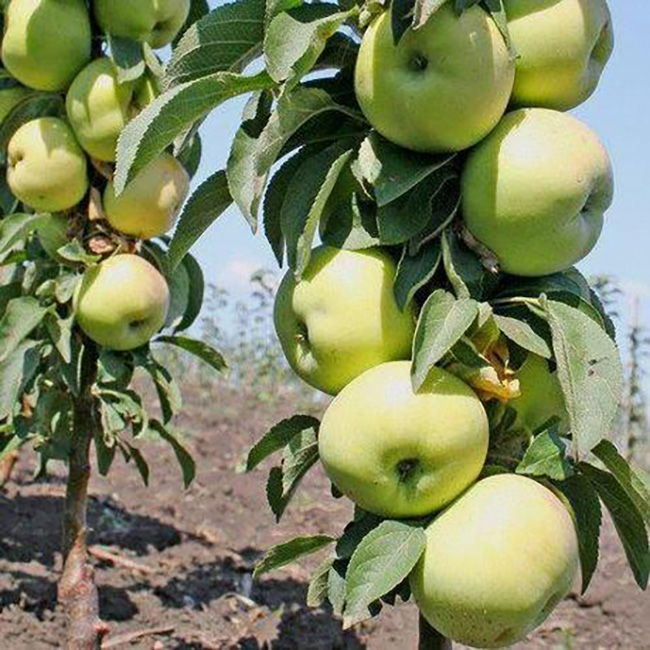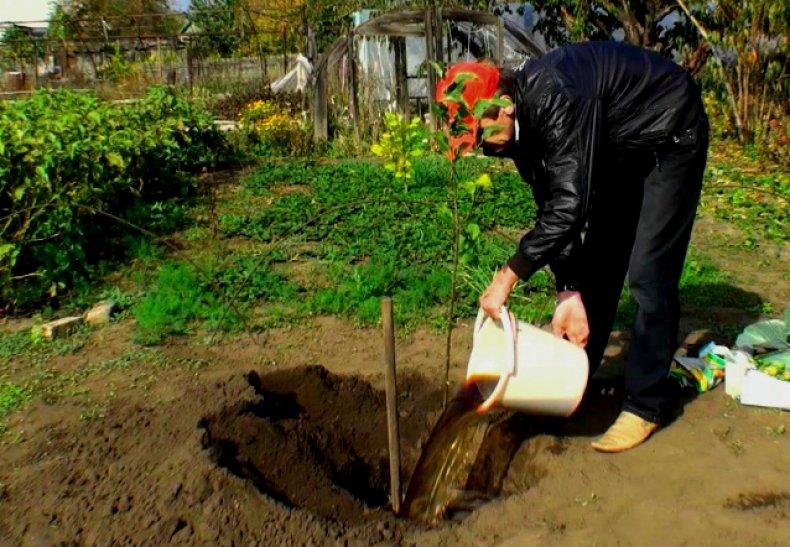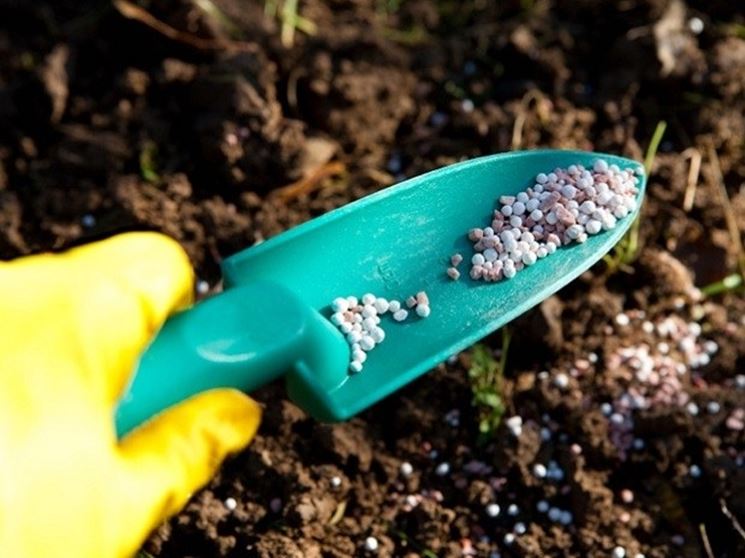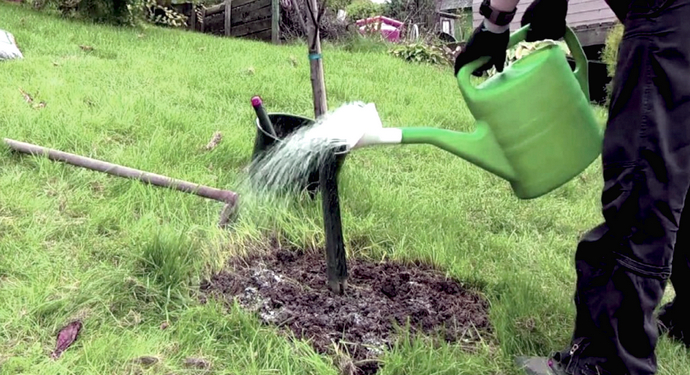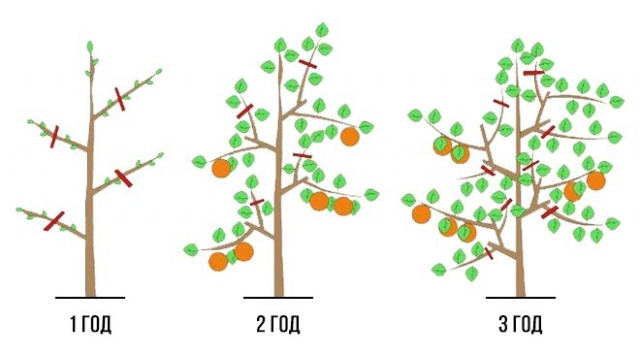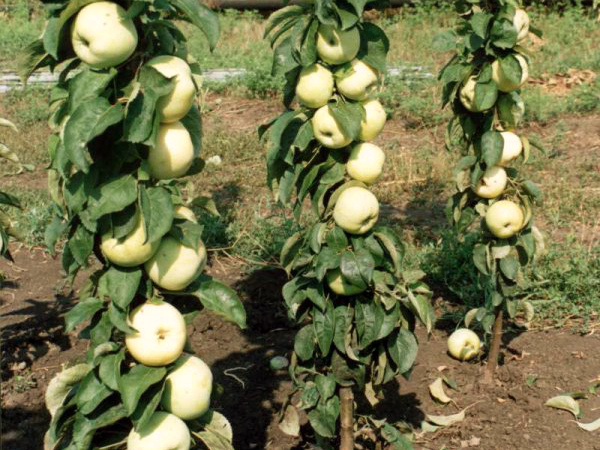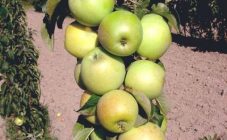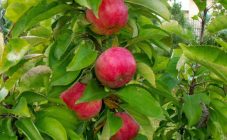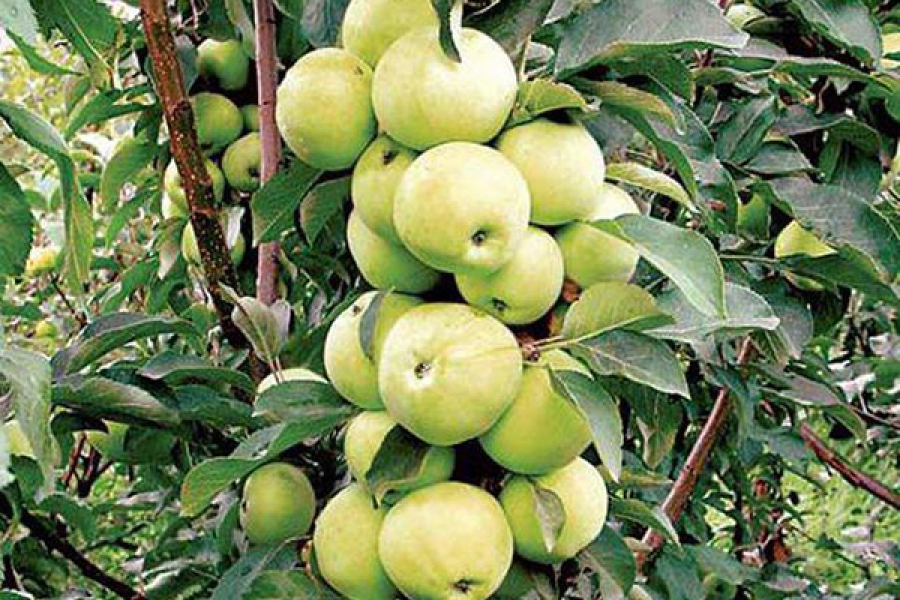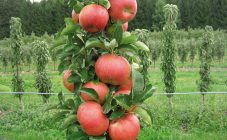Content:
Many people love apples. In this regard, it is not surprising that apple trees in our country are found on most garden plots. In recent years, gardeners are increasingly opting for original columnar varieties.
Columnar apple trees are a relatively new type of culture, but very interesting. Often such plants are planted on the site, not only for the purpose of obtaining a decent harvest, but also for aesthetic reasons. For example, the columnar Green Noise apple tree often finds application in landscape design.
History of creation
Apple tree Green noise appeared on the horticultural market relatively recently, but very quickly gained high demand. The development of the variety was carried out by specialists from VNIISPK of the city of Orel. The culture is recommended for planting in Central Russia and a number of other Russian regions. Green noise refers to early winter consumption. Gardeners especially highly appreciate this apple tree for its incredibly tasty fruits and their presentable appearance.
Description of the variety
Apple Green Noise is a light-loving apple variety that even the most experienced gardener can handle. The tree is of medium height and rich green foliage.
The main characteristic of Green Noise is its large and juicy fruits. One apple weighs about 200 grams on average. Fruit color is greenish with a yellow tinge. At the same time, there is a bright pinkish blush almost on the entire surface. The fruit tastes sweet and sour with a rich honey aroma. The pulp is dense and juicy. From one tree, you can collect about ten kilograms of harvest. If agricultural technology is brought to a higher level, this indicator can be increased at least twice.
The fruiting period of the Green Noise apple tree is not the longest. It is about 15 years on average. After the expiration of the indicated period, the productivity of the culture begins to decline very sharply. This is due to the drying out of fruit formations. But the plant itself does not die and is quite capable of living for more than a dozen years. In this regard, experienced gardeners, in order to obtain high yields without interruption, prefer to periodically (about once every 10 years) completely renew the garden.
Agrotechnics
For planting, experts recommend choosing annual seedlings of the culture. Despite the fact that they do not look very convincing against the background of two-year-old specimens, such seedlings take root in a new place much better and faster.
Landing
Planting should be done in early spring, before bud swelling and sap flow. The planting pit is usually prepared in advance (even in the fall). The first step is to provide for drainage. Usually it is made of large crushed stone. The removed soil of the planting pit should be mixed with any organic fertilizer and phosphorus-potassium composition. The mixture for each tree should include at least 4-5 kg of organic matter and about 80-90 g of superphosphate and potassium sulfate. It will not be superfluous to add 250 grams of wood ash to the composition.
When placing planting material in a pit, the roots should be treated with great care, avoiding bending of individual roots. Having covered the plant up to about half, you need to carefully tamp the soil and pour half a bucket of water at room temperature into the hole. After all the moisture has been safely absorbed into the ground, planting work can be continued. After the final filling of the seedling, the soil will remain again to compact around the trunk and tie the plant to the support. The last step is to form a hole with 2-3 cm sides around the trunk and add water. Water consumption for each seedling varies from 1 to 2 buckets, depending on the age of the planting material. After watering, the plant must be mulched.
Top dressing
Without a certain amount of fertilizing, the apple tree Green noise columnar is unlikely to be able to give a decent harvest. Fertilizers are an integral part of plant care. Taking into account the peculiarities of the structure of the root system of the culture, it is more expedient to apply top dressing in solid form directly to the soil surface, followed by watering (without using a jet pressure).
During each growing season, three additional dressings should be carried out:
- the first time fertilization is applied about a month after planting;
- the second feeding is done during the flowering period of the plant;
- the third fertilization is necessary during the setting of the ovaries.
The first top dressing usually includes organic matter: humus or compost. It is required to be applied along the perimeter of the crown in the amount of 4-5 buckets. It is important not to forget to mulch the plant after feeding and water it thoroughly. The second feeding is carried out with phosphorus-potassium tuk. 1 tree will require 80 g of superphosphate and 50 g of potassium chloride or sulfate. This mixture can be replaced with urea in the amount of 250-300 g. The last fertilizer can be divided into two applications: in the middle of July, urea is reintroduced, and a couple of weeks after that - a phosphorus-potassium mixture or complex fertilizer.
In addition to the above, it is recommended to sprinkle some ash around the crown perimeter. Since the root system of the columnar apple tree Green Noise is small and shallow, the plant responds very well to any foliar feeding with solutions of trace elements, biological products, and herbal decoctions. By the end of July, all feeding should be completed.
Watering
When growing a crop, it should be remembered that it is timely, regular and sufficient watering that ensures the juiciness of the fruit pulp. The supply of sufficient moisture to the root system of the tree must be monitored with a particular degree of care throughout the entire growing season. The description of the watering procedure itself should look something like the following. Small sides are formed (about 2 cm high) to retain moisture. Each plant uses 1 or 2 buckets of water.
The need for watering should be determined by the depth of soil drying. If the dry soil layer is about 4 cm, it's time to water the apple trees.
If the plot has an irrigation system, it is best to irrigate in the furrows between planting rows.
In especially dry summers, sprinkling can be used, which should be done either early in the morning or in the evening after sunset. On relatively light soils, watering is required from 2 to 3 times within one week.
Load regulation
In order for Green Noise to be able to produce a good harvest, the level of stress on the plant must be regulated. The plant should be prepared for systematic fruiting in advance.The fact is that if a 1-2-year-old tree bears fruit in full force, the tree will become weakened, and subsequently it will not even be possible to dream of stable fruiting and a large number of berries.
In the first year, all ovaries should be removed without exception. After a year, several ovaries can be left. In subsequent years, experts recommend two thinning: during flowering and during the formation of ovaries. At the first thinning of the ovaries, twice as much as the planned harvest is left, and at the second, when the bunches tie the fruits, no more than two are left on each of them.
Pruning
Trimming of columnar apple trees is not required, due to varietal characteristics, because lateral shoots are not formed in the culture during normal development. But failures may occur, and the plant begins to actively produce side shoots.
In this case, you can maintain the columnar shape in one of two ways:
- remove all lateral branches into two buds (you can start from the second year of the plant's life);
- form a crown in the form of a candelabra (2-3 trunks).
Advantages and disadvantages
The Green noise variety has both its undoubted advantages and some obvious disadvantages.
The first include:
- compactness;
- early maturity;
- ease of care;
- high productivity;
- keeping quality;
- excellent taste characteristics;
- resistance to diseases and pests.
The variety has few disadvantages, but they are quite serious: the high cost of seedlings and a short fruiting period.
